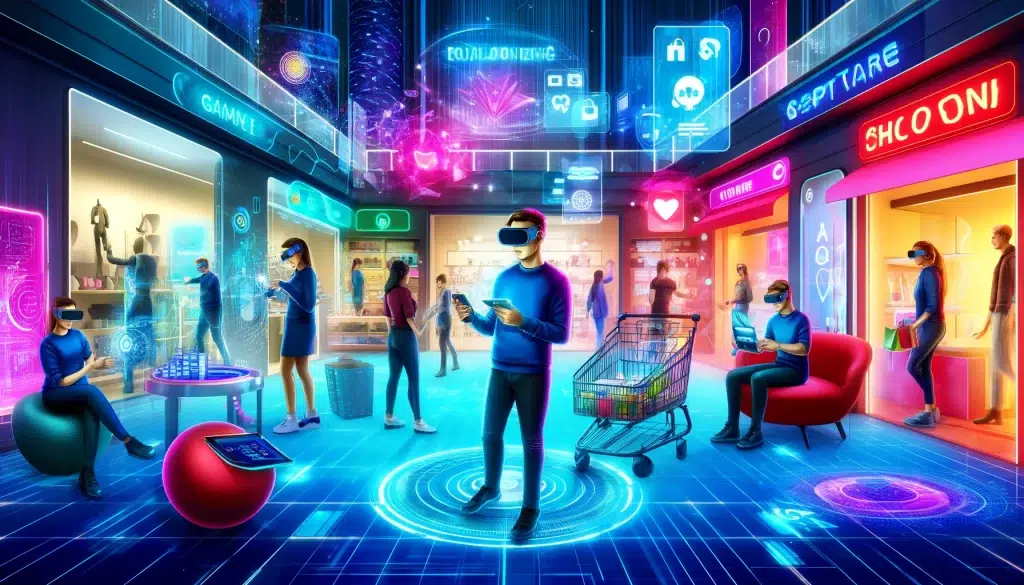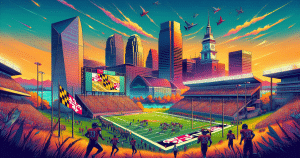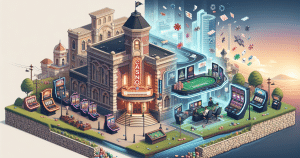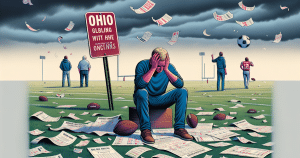Introduction: The retail landscape is undergoing a dramatic transformation as businesses integrate gaming elements into the shopping experience. This trend, known as “gamification,” leverages the engaging and addictive qualities of games to enhance customer engagement, drive sales, and create memorable brand interactions. As consumers seek more immersive and interactive experiences, retailers are turning to gamification strategies to stand out in a competitive market.
The Rise of Gamified Shopping
Gamification in retail involves applying game-design elements in non-game contexts, such as loyalty programs, apps, and even in-store interactions. By incorporating challenges, rewards, and interactive features, retailers can captivate consumers’ attention and encourage them to engage more deeply with the brand. Common examples include earning points for purchases that can be redeemed for discounts, competing in challenges to win prizes, or unlocking exclusive content through in-app activities.
Benefits for Retailers and Consumers
The integration of gaming and shopping offers numerous benefits. For retailers, it boosts customer engagement and retention, as the interactive and fun nature of gamification encourages repeated visits and prolonged interaction with the brand. It also provides valuable data on consumer behavior, allowing businesses to tailor their offerings and marketing strategies more effectively.
Consumers, on the other hand, enjoy a more engaging and personalized shopping experience. Gamification can make routine purchases more exciting and rewarding, potentially transforming mundane shopping tasks into enjoyable activities.
Case Studies: Success Stories in Retail Gamification
Several companies have successfully implemented gamification strategies. For instance, a popular clothing retailer introduced an app that allows customers to create virtual outfits by mixing and matching pieces from their inventory. Customers earn points each time they share their creations on social media, which can be used for discounts on future purchases. This strategy not only promotes the brand but also encourages user-generated content and social sharing.
Another example is a grocery chain that launched a digital game tied to their loyalty program. Customers earn virtual “coins” for every purchase, which can be used to play games within the app to win real-world coupons and discounts. This approach has proven effective in increasing customer loyalty and frequent store visits.
Challenges and Considerations
While gamification can provide significant benefits, there are challenges to consider. The cost of developing and maintaining sophisticated gaming features can be high, especially for smaller retailers. There’s also the risk of gimmickry; if the gamified elements are not well-aligned with the brand’s identity and customer expectations, it could lead to disengagement.
Furthermore, privacy concerns are paramount as these interactive systems often collect a large amount of personal data. Retailers must ensure that their gamification strategies comply with data protection regulations and that they maintain transparency with customers about how their data is used.
The Future of Gamified Retail
As technology continues to advance, the potential for gamification in retail will expand. Augmented reality (AR) and virtual reality (VR) technologies could further enhance the shopping experience, offering even more immersive and interactive opportunities. For example, AR could allow customers to see how furniture might look in their home before making a purchase, or VR could simulate the experience of a fashion show from a consumer’s living room.
Conclusion
The integration of gaming and shopping is revolutionizing retail, offering new ways for brands to engage consumers and differentiate themselves in a crowded market. By creating fun, interactive, and rewarding experiences, retailers can foster greater customer loyalty and drive growth. As this trend evolves, it will be fascinating to see how gamification continues to shape the future of consumer behavior and retail strategies.

















